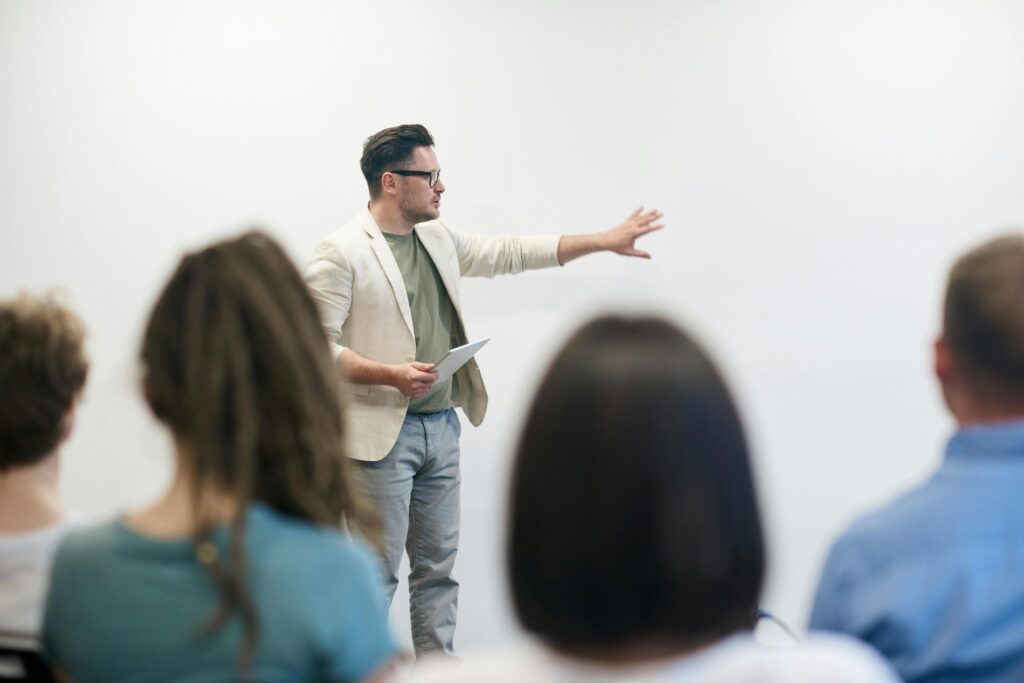Science
The Alps are Losing Their Glaciers: They Could Disappear Within Decades
06 January 2026

For some time now, states and international organizations have been working to limit the use of hard power in diplomatic relations and the labor market. The goal is to replace this model with a smart power approach. A similar challenge is worth discussing in the context of organizing the work of schools, teachers, and students. In many places, there are attempts to implement practices that move away from any form of coercion in favor of motivation and student engagement.
Can a student be forced to learn? The traditional set of factors, such as punishment and reward, along with the formal authority of the teacher, is clearly a thing of the past. Solutions now focus on engaging students in self-directed activities and taking responsibility for their development. The problem is that it is still much easier to rely on school grades to determine career prospects or exclusion. Worse yet, this is reinforced by the external examination system and the school rankings that remain popular among parents.
Many of us remember the once-popular saying, “Study hard, because knowledge is the key to power.” Few know that this is a loose adaptation of a poem by the Polish writer, publicist, and social activist Ignacy Baliński, who wrote:
If you want to be someone in life, study,
So you don’t perish in the crowd;
Knowledge is the key to power,
In it lies the strength of those who know more.
Knowledge and power. School as dominion, governance, rule… The concept of power derives from the Latin verb potere, which means “to be able.” The meanings encompassed by this word include coercion, force, violence, and manipulation. It heralds the ability to achieve intended effects and exert absolute influence over others.
American political scientist and former dean of the Harvard Kennedy School of Government, Joseph Nye, has studied power extensively over the years. He identified two forms of its application: hard and soft. Hard power is coercive, relying on the politics of force, achieving goals through compulsion or the use of incentives according to the “carrot and stick” principle. Soft power, on the other hand, is associated with assets such as attractive personality, culture, and values, avoiding the use of coercive instruments, and relying on persuasive narratives that appeal to norms and benefits.
The practice of applying “hard” and “soft” power extends to educational solutions as well. Students in Far Eastern countries, who perform excellently in their studies, are generally raised in a culture of strict rules and high demands. This includes not only the school’s operational framework but also the significant status of teachers, with responsibility for outcomes resting on both sides. The obligation to give more than one might reasonably be expected to is prevalent.
Soft ideas in education are promoted and cultivated in most Western countries. Here, the focus is on the student, their abilities, and the autonomy to choose goals and learning methods. Teachers’ authority stems from their ability to build relationships with students and the attractiveness of their proposed activities. Interestingly, despite these differences, students from both educational systems achieve the highest results in studies that assess achievement levels.

A key figure in the development of applying power within the hard model of learning is undoubtedly Burrhus Frederic Skinner. He proposed analyzing student behaviors using factors based on rewards and punishments. Skinner argued that such reinforcement is the most crucial element of the learning process. He posited that all behavior is learned, and thus, by appropriately manipulating the system of stimuli, a teacher can influence both the attitudes and behaviors of students in a desired manner.
In the learning process, Skinner distinguished between two types of reactions: reactive and operant. Reactive behaviors are triggered by applied stimuli and do not require prior training. This forms the basis of behavioral conditioning. Learning occurs through the formation of planned associations between stimuli and responses. Consequently, an individual learns to respond to specific stimuli by reinforcing desired behaviors through repetition of actions required by the teacher.
Skinner’s ideas gained attention due to the popularity of his novel Walden Two, which depicted a utopian society governed by principles of behavioral conditioning. Scientific validation came with the publication of his 1953 work, Science and Human Behavior, which described how these mechanisms find practical applications in various social institutions, including schools. By the early 1960s, Skinner’s principles were widely applied in clinical practice and in shaping the behaviors of patients, inmates, and students. The proposed solutions are still used by therapists and specialists dealing with dysfunctional behaviors. The principle of conditioning, including the use of rewards and punishments, remains a popular method practiced by teachers.
Hard power in education assumes that selected human behaviors become more significant than others as a result of appropriate reinforcement. Skinner termed this mechanism operant conditioning, commonly referred to as instrumental or operant conditioning. In schools, this is most easily implemented through the use of grades or by providing comments that critically describe a student’s attitude or behavior. For children, this type of stimulus is particularly impactful and shapes their behavior, especially as it is often picked up by peers and used to stigmatize not just the actions or behaviors, but the students themselves.
We recommend: Sabotage in the Age of Modernity – technology, intended to support our development, is now causing us harm
The widespread access to knowledge, the decline in the authority of traditional figures, and the focus on compulsively seeking immediate results have compelled schools to move away from behavioral practices. Instead, there is a need for solutions that can flexibly yet effectively inspire and engage students in the learning process. One of the key approaches incorporating smart power principles in education is formative assessment.
This is a teaching practice primarily aimed at assisting students in their learning journey. It is a particular form of ongoing support provided at the outset and throughout the learning process. In the UK, the Department for Education promotes the principles and practices of formative assessment under the term “assessment for learning.” It defines this as the process of seeking and interpreting evidence to help both teachers and learners identify their current learning stage, the next steps, and how best to achieve them.
Dylan Wiliam, a former advisor to Tony Blair and emeritus professor at the UCL Institute of Education, played a significant role in the widespread adoption of formative assessment in schools. His charisma and advocacy led to the implementation of formative assessment practices not only in the UK but globally. In Poland, the Center for Citizenship Education (CEO) systematically and comprehensively implements solutions proposed within formative assessment. The model promoted by the CEO is based on the following principles:
The key to formative assessment practice in schools is the shared responsibility of the entire community: students, teachers, specialists, and parents. Teachers meticulously prepare their lessons, developing sets of outcomes that students are expected to achieve during class. These are presented at the beginning of the lesson and are known as NaCoBeZU (What We Will Pay Attention To). This clarifies the intended learning outcomes for the class, enabling both teachers and students to monitor the progress of their actions in real-time.
Formative assessment practices include many learning-friendly solutions. One such technique is the “traffic lights” method. Students use colored cards: red, yellow, and green. Periodically, the teacher asks about the level of understanding of the lesson content. Raising a green card indicates no problems, yellow signifies partial misunderstanding, and red indicates a complete blockage. By observing the number of colors shown, the teacher can either revisit the unclear part of the lesson or organize group work and provide individual help to the student who showed the red card. Often, pair or group work is used, where students who understand the concept explain it to those who are struggling.
This method, rooted in smart power principles, ensures that learning is a collaborative, engaging, and supportive process, fostering an environment where students are motivated and empowered to take charge of their education.
We recommend: Education is to be Reinvented, Not Just Corrected
A school does not need to prove that we are better or even as good as others. The essence of learning in the classroom is not a race, rankings, or even daily assessments. True development involves change, continuously confronting one’s limitations, and acquiring practical skills that define students’ progress toward adulthood. For many teenagers, learning solely for exam results is viewed either as oppression or a waste of time. It is time to modify this process by highlighting the attractiveness of goals and the benefits of the transformation achieved through learning.
Smart power in education combines partnership, mutual respect for the capabilities and limitations of each party, and the joy of participating in development. Through these solutions, everyone can experience the value and high level of satisfaction from the process and the results of personal engagement. Such changes allow us to become more effective and content individuals.
Translation: Klaudia Tarasiewicz
We recommend: